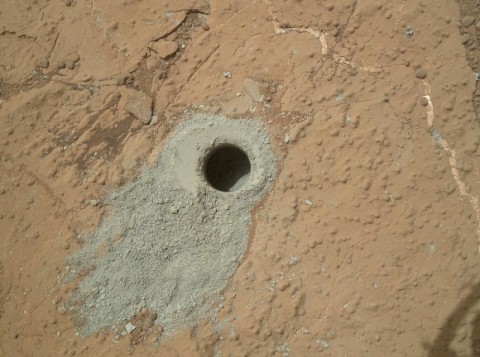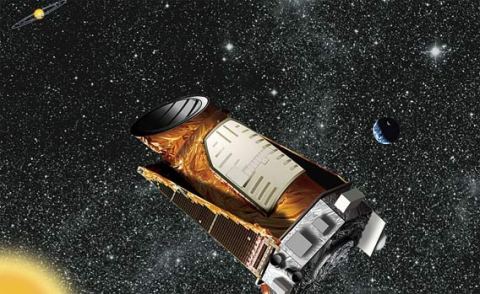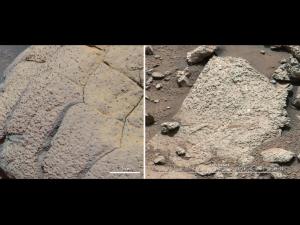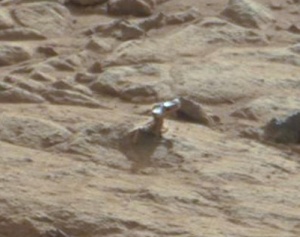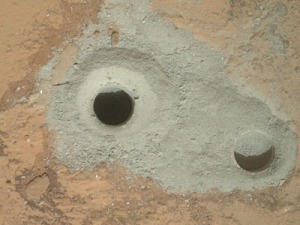
Here’s an interesting tidbit that came across my radar today: A very illusive and rare meteor shower may flare up tonight for the first time since 1930! On June 11th of that year, a small group of astronomers reported a short-lived meteor shower that was sought out in subsequent years, but never seen again. Now an astronomer named Peter Jenniskens with NASA and SETI has suggested that Earth is passing through the same comet trail it did back in 1930, and thus we could see this rare outburst, called the Gamma Delphinids, again- TONIGHT. Fortunately the moon will have set several hours before the expected peak between 2:30 and 4:30am CDT, leaving only the weather to stand in the way of getting to witness this rare event. I must point out, however, that scientists aren’t nearly as certain about this meteor shower as they are about the more reliable yearly showers such as the Leonids, Geminids, Perseids, etc… So if you’re a fan of meteor showers and have the will power to get up in the wee hours and sit outside to watch, tonight could reward your efforts with a show not seen in 83 years. (Via Universe Today and the American Meteor Society)
In other science news, more evidence of normal, habitable water on the ancient Mars surface was discovered recently. You’re probably thinking this discovery came from the Curiosity rover, but it actually came from Opportunity, one of the twin rovers that landed on Mars in 2004. Opportunity’s team sent her to investigate an interesting rock outcropping, and they found evidence of certain clay minerals that could only have formed in water that would be habitable to life as we know it. This discovery is right in line with Curiosity’s findings from February, and strongly supports the theory that Mars once had running water on the surface, and might have even supported microbial life! As Curiosity keeps trekking toward Mount Sharp, the rover will keep looking for these same minerals to help paint a clearer picture of Mars’ watery past. (Via New Scientist)
Some sad news from NASA: the immensely successful Kepler Mission in danger. The space-based planet hunting telescope has suffered another malfunction with one of its reaction wheels. The craft had four of these wheels to begin with, and they are responsible for keeping the spacecraft correctly oriented. It lost one of the wheels last year, but can still survive with three. Now that another wheel has stopped functioning, it will be nearly impossible for engineers to keep Kepler correctly pointed at the small patch of sky it’s been staring at since the mission began. NASA engineers think they can devise a way to use the spacecraft’s thrusters to coarsely aim it in the right direction, but since the process of analyzing Kepler’s observations is so painstaking and tedious, coarse alignments may not be accurate enough to keep the mission running normally. NASA engineers also haven’t given up on getting the wheel working again, so we’ll have to wait and see how this pans out. Even if Kepler dies, the mission has already been a huge success and there are several other new planet hunting missions in the works. For more on this story check out the always-reliable Bad Astronomy.
It’s been way too long since I last posted anything science-related. Photographing weddings, playing in two bands, and working a day job has eaten up all of my spare time lately! But I’ve found enough time to bring you some exciting updates and cool videos today.
Above is a comparison of the 5 newly confirmed exoplanets in the Kepler-62 system. The Kepler mission also confirmed an exoplanet around another star, Kepler-69, but that one isn’t nearly as interesting as the Kepler-62 system. Specifically, Kepler-62e and 62f are very exciting because they are officially the smallest potentially habitable exoplanets discovered to date! 62e and 62f are about 1.6 and 1.4 times the size of Earth, respectively. Based on our best computer models for planetary formation and evolution, scientists estimate that 62e is probably cloudy and quite warm, while 62f is probably covered in water and quite cooler, possibly even covered in ice. But different atmospheric conditions could change that significantly… there’s no way (yet) to know for sure. For more on this exciting discovery check out Universe Today and Bad Astronomy.
In related news: Building on the awesome success of the Kepler mission, NASA has announced its next exoplanet-hunting mission, the Transiting Exoplanet Survey Satellite, or TESS. Scheduled for launch in 2017, this new space-based telescope will look for exoplanets in the same way the Kepler mission has been, but it will use four wide-angle telescopes to look at a much broader part of the sky.
Now for the video goods. These are both very cool short segments from Canadian astronaut and current ISS commander Chris Hadfield.
This one is a mesmerizing demonstration of how water behaves in a zero-gravity environment by wringing out a wet washcloth:
And this one is Chris talking about possibly the coolest aspect of being in the ISS- taking breathtaking photographs of Earth from the ISS’s cupola:
______________________________________________________________
Fuck yes! That’s all I can think right now about the awesome news that came from NASA a few hours ago. The Curiosity rover has found evidence in samples of rock gathered a few weeks ago that Mars once had an environment suitable for microbial life. The rover drilled out samples from inside a rock in an area dubbed “Yellowknife Bay” by mission scientists. Those powder samples where then analyzed by specialized instruments on board, and the results showed that sulfur, nitrogen, oxygen, hydrogen, phosphorus, and carbon are all present in the rock. The range of minerals actually surprised the mission scientists, who weren’t expecting to find quite such a wide range of minerals.
“Were conditions on Mars ever suitable for life?” is one of the core questions the Curiosity mission, and now that question has been answered with a big YES. This is very exciting news, and hopefully there will be even more clues into Mars’ past discovered on this mission. For the full report, check out the press release on NASA’s website.
In other, less-exciting science news, beware of media reports claiming that fossils of diatoms (microscopic plant life) were recently found inside a meteorite. The claims come from Chandra Wickramasinghe, who is a scientist known for outlandish claims that don’t stand up to real scientific scrutiny, and are largely intended to stir controversy. This latest report claims that the fossilized diatoms were found inside a fragment of a meteorite that fell over Sri Lanka in 2012. Except they don’t prove that a) the sample was from said meteorite, or b) that the sample was from a meteorite at all! Also diatoms are EVERYWHERE on earth, and can very quickly contaminate any meteorites that make it to the surface. Thankfully there are skeptics like Dr. Phil Plait out there who regularly and thoroughly debunk such things when they pop up. Head over to his blog Bad Astronomy to read more on how Wickramasinghe’s experiments were flawed, and why his claims just don’t hold water.
Dennis Tito to send a married couple to Mars in 2018, in a spaceship lined with their own poop!
March 1, 2013
Billionaire Dennis Tito, who is known as the first-ever space tourist, unveiled on Wednesday Inspiration Mars, a plan to launch two people, likely a married couple, on mission to Mars in 2018. The best part: the spaceship in which they travel will be lined with the couple’s own shit! This whole idea sounds incredibly far-fetched, and I even mentioned my doubt of its feasibility last week when the “teaser” press release about the press release made some headlines. It still sounds kinda crazy because of the part about the shit (I’ll get to that in a minute), but they left out one really important detail last week- the couple won’t actually be landing on Mars, just flying around it once in a spacecraft. Actually landing on Mars is really, REALLY, REALLY hard in terms of engineering and feasibility, but just sending a couple of people on a slingshot around it? Not quite as hard. Tito is very committed to making it happen, and is even prepared to fund the first two years of mission development, so this could work. More details on the project can be found in this New Scientist article.
Now, as far as the shit goes… it’s really not as crazy as it sounds. One of the biggest challenges to deep space exploration like this is that the crew members will get bombarded with genetic mutation-inducing cosmic radiation. We’re talking X-rays and Gamma rays, along with the ever-present solar wind of ions. It’s practically a death sentence if you can’t shield the crew from all that, and as it turns out, dried up human waste is actually pretty good at just that! Rather than just jettison it into space, why not seal it up in (fully sanitary, of course) bags and line your spaceship with it to add to the shielding of your spaceship? Astronauts onboard the ISS are already using a reactor system that recycles the water from their urine, and gross as it may seem, this mission will do that AND recycle the moisture from their poop. When you’re going on a 500 day mission to Mars, you have to be very resourceful. For more on the poop shield, see this other article on New Scientist.
In other Mars-related news, unfortunately the Curiosity Rover has suffered a computer glitch which has forced the team to switch everything over to the rover’s backup computer. In short, they will slowly reboot all the rover’s systems from the backup computer, make sure everything checks out, and continue with normal operations. Meanwhile, another team will investigate the problem with the primary computer and attempt to fix it so that it’s operational and can be used in case the backup computer fails. For more, check out this post on Universe Today.
Science Roundup: Universe doomed to become boring/Tiniest exoplanet/Men on Mars in 2018
February 21, 2013
Here’s a quick roundup of some interesting stories and headlines that have popped up in the science world recently:
- Based on new calculations using information from the Higgs Boson discovery last year, some physicists are worried that the universe might be doomed for boredom. The new math shows that the very existence of everything could be inherently unstable, and in a few tens of billions of years a tiny bubble of an apparently much more boring, alternate universe might pop-up and subsequently expand at the speed of light, destroying everything. Granted, there’s still a lot to learn about the Higgs, the equations used to make this prediction will improve drastically over the coming years, and the human race probably won’t be around to see this happen, but I can’t help but laugh thinking about the universe vaporizing into a more “boring” state of existence. (Via Discovery News and New Scientist)
- I wish I had time to cover/post about the Russian meteor explosion this past weekend, but I was out sick Friday and had a very busy weekend/early week of moving in with my lady Old Red Boots. You probably know the basics- a medium-sized meteor entered the atmosphere over Chelyabinsk, Russia last Friday at about 9:20am local time. I just want to point out the important facts: (1) The Russian meteor explosion had nothing to do with the close fly-by of asteroid 2012 DA14 which happened later that same day. The trajectories/orbits of the two were completely different. It was simply a bizarre coincidence. (2) The damage to buildings and glass was caused by the massive sonic boom, as well as the actual explosion of the rock itself high in the atmosphere. The sounds and damage were NOT from the impact of the meteor hitting the ground. There’s tons of footage of this thing, but this video has the best audio I’ve found– if you have a subwoofer, turn it up and you’ll get some sense of the earth-shattering rumble. This video is long but shows both the bright streak of the meteor (about 4:30 in) and has the ensuing sonic boom (about 7:00 in). (3) NASA estimates the meteor was about 55 feet across and weighed between 7,000 and 10,000 tons. (4) A large chunk of the space rock is believed to have landed in Chebarkul Lake near Chelyabinsk, gouging a large hole in the ice. Phil Plait of Bad Astronomy had great coverage and follow-up of this event, so be sure to check those posts out as well!
- Dennis Tito, the first space tourist, wants to put humans on Mars in 2018, and he’s created a non-profit called the Inspiration Mars Foundation to do it. I have to be honest, the timeframe of this sounds absolutely crazy to me. Not many details have been announced, but apparently there will be a press conference next Wed. Feb. 27th in which more details will be revealed, so I’ll try to withhold my skepticism until then, but it’s hard. (Via Universe Today)
- Astronomers with NASA’s Kepler Mission have found the tiniest exoplanet yet, orbiting the star Kepler-37 about 200 light years away. This planet is significant because it’s even smaller than our own Mercury, and just barely bigger than Earth’s moon! Finding a planet that small is a major milestone and huge accomplishment for the Kepler team. I’ve no doubt they will be finding the Holy Grail of planet-hunting, a true Earth twin, within a year or two. (Via Bad Astronomy)
Mars rover Curiosity updates
February 14, 2013
It’s been a hot minute since I mentioned the Mars rover Curiosity. She’s been slowly but surely working her way across Gale Crater, stopping to take photos along the way and investigate anything interesting she comes across. Recently she came across this bizarre-looking rock protrusion that looks a bit like a shiny door handle or knob:
It was a pretty interesting and puzzling find, but NASA scientists think they have an explanation. Indeed, it’s not a knob or hood ornament, nor is it made by aliens. A much more logical explanation is uneven weathering and erosion. For the full details head over to Universe Today. But in short, Ronald Sletten from the Mars Science Laboratory team at NASA/JPL explained in a press release that the object is a small part of the rock that is different in composition from the rest. The shiny part is made up of a harder type of rock than its surroundings. Since the surface of Mars is home to lots of dust/wind storms, there is quite a bit of wind erosion, and the softer surrounding rock erodes aways much faster than the harder rock. The shininess is also a by-product of erosion- certain types of rocks have a tendency to become smooth and shiny from erosion rather that just being blown away. NASA also posted a PDF with some good photos comparing the Mars image to similar phenomena on Earth. What I’m wondering is- what is that harder part of the rock made of? Why is there? Are there any other formations like it nearby? I know that on earth some volcanic rocks have a smooth & shiny appearance, so could this be a chunk of volcanic rock that was flung from an eruption and landed in water, then moved to its current location by fast-moving water and deposited in a muddy area that subsequently hardened into sedimentary rock? Maybe more theories will come out soon.
In other Curiosity news, the final instrument yet to be used/tested was the percussive rock drill. The drill was successfully tested and then used on Feb. 8th to drill the hole seen on the left in this image:
The rover has now successfully tested all of her science instruments and everything is working perfectly. A sample of the pulverized rock was taken, and will be analyzed in the days to come. This rock is suspected of having been altered or eroded by flowing water on the surface many millions of years ago. I’m looking forward to seeing what they find to confirm (or deny) this theory and what else is learned about Mars’ watery past.
Asteroid Apophis won’t kill us all in 2036
January 11, 2013
You may have heard about the killer asteroid aptly named Apophis, which had a chance of hitting earth in 2036 and potentially devastating a good chunk of the human population. Thankfully, scientists have now made more accurate observations of Apophis and ruled out the possibility of it hitting earth.
The asteroid has been on a watch list for many years because in 2029 it will pass very VERY close to earth. So close that it will actually be inside the orbit of some of our satellites! The fear was that if the asteroid passed through a very specific spot as it passed us, the earth’s gravity would tug on it just right so that its orbit would be altered and it would hit earth on its next pass in 2036. Due to limited observations of Apophis, astronomers didn’t know its exact orbit accurately enough to determine if it would pass through this very specific gravitational “keyhole.” Even before this latest observation, which occurred during its latest flyby of earth, the odds of Apophis passing through that keyhole were very slim (about 1 in 100,000 if I remember correctly, but don’t quote me on that) but significant enough to worry. Further observations a few years ago lessened the odds considerably to about 1 in 1,000,000. Now, astronomers are absolutely positive the rock will not pass through that gravitational keyhole, and the rock will never hit earth. They also learned from these latest observations that Apophis is actually larger than originally thought- about 325 meters in diameter, vs. 270. So it’s a really good thing that this rock won’t hit us!
This does not mean we can sit back and relax, however. There are probably thousands of asteroids flying around out there that we haven’t even seen yet, and any of them could be on a collision course with us. It’s a very real threat, and based on our knowledge of past extinctions and impacts, statistically it’s only a matter of time before we get smacked by another one. We just have be able to detect it before it hits us, and have the technology in place to deflect it.
More detailed info can be found at Bad Astronomy and Universe Today.
NASA scientist mentions Instagram, proves science is hip (and some other science-y tidbits)
December 6, 2012
It’s been a very crazy week, and I know this may be old news already for some of you, but I had to post about NASA’s announcement on the Curiosity mission findings that caused such an uproar on the internet a few weeks back. For a detailed explanation of what was found and what it means, check out this article on Universe Today. In short, this was the first time all of Curiosity’s instruments had been used in concert together, and the consistency of the results was exciting. It pointed to organic compounds in the Martian soil, but they can’t say for sure that the Carbon in those compounds is of Martian origin. First they have to determine if the Carbon is actually from Mars, and not a contaminant from earth air trapped in the instruments, then they have to determine whether the Carbon is from a biological or non-biological source. There are lots of possibilities that must be ruled out before we will know for sure what’s in the soil, and where it came from. At the announcement, Curiosity Project Scientist John Grotzinger is quoted as saying, “We’re doing science at the speed of science. But we live in a world that’s sort of at the pace of Instagrams. The enthusiasm that we had, that I had, that our whole team has about what’s going on here, I think it was just misunderstood.” That was after he was questioned about the wild speculation that resulted from his comments in an NPR story about a possible “Earth-shaking” discovery by Curiosity. I just love that a NASA scientist compared the speed of science to the “pace of Instagrams.” Instagram and Science! In the same sentence! That must mean science is hip, right? RIGHT?
In other NASA-related news, it was announced on Tuesday that NASA will build and launch in 2020 another Mars rover very similar to Curiosity. While that may not be the most exciting thing to hear, it shows that NASA is building confidence in its abilities to do mind-blowing things like land a nuclear-powered, car-sized roving science lab on another planet with a rocket-powered sky crane. The more we learn about Mars, the closer we get to putting a man there. Who knows, maybe a prime objective of this new mission will be to actually look for signs of past or current life. No mission to Mars yet has actually had that as an objective. For more on this new mission read this article on New Scientist.
While these next two items aren’t necessarily science-y, they are quite awesome:
- This Russian blog posted a collection of fascinating Autochrome color photographs of Paris taken just before the first World War. They’re some of many early color photos taken by a team of photographers commissioned by French philanthropist Albert Kahn. (Via Kottke)
- Filmmaker and photographer Cy Kuckenbaker created this mesmerizing time-compressed footage of planes landing at San Diego’s airport. Do yourself a favor and put it on fullscreen HD. (Via Kottke)
